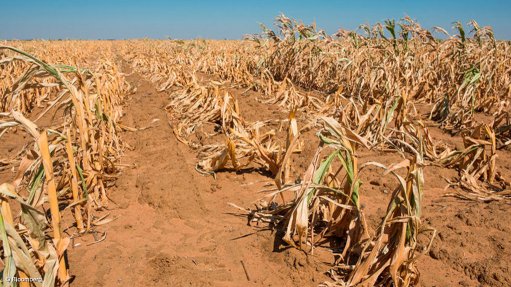
Photo by: Bloomberg
State-owned specialist land and agricultural financial services provider Land Bank has called on farmers in drought-declared provinces to apply for concessional loans, raised by the bank from the Industrial Development Corporation (IDC), to help ease the effects of the drought and return to viability in the long term.
The IDC advanced a concessional loan of R400-million to the Land Bank for on-lending to farmers affected by the current drought. The farmers could apply for these loans immediately.
Government last year declared KwaZulu-Natal, Mpumalanga, North West, Limpopo and Free State as drought disaster areas, following poor rainfall which led to critical losses in production, especially that of maize.
Maize production, particularly white maize is set to decline considerably this season owing to a marked reduction of some 27.1% in the area planted.
Further, agriculture growth fell by 8.4%, the largest yearly fall since 1995, according to Statistics South Africa, while weather phenomenon El Niño’s effects have seen the sector contract by 14% and resulted in losses of more than $1-billion.
“The conditions in the affected provinces are unforgiving – to the crops and livestock. In keeping with our mandate, this collaboration effort with the IDC is an offer of practical support to help farmers cope with the drought and recover when conditions improve,” Land Bank CEO TP Nchocho said in a statement on Wednesday.
He explained that the lending conditions for the concessionary loans were “fairly relaxed” and available in three forms. These included the rate of interest being pegged at prime less 3%, repayments that could be made over an extended period, or the bank’s offering of extended capital moratorium of up to two years.
“These loans represent the cheapest finance available to farmers in drought declared areas in the country today,” Nchocho averred.
The loans could further be used as a source of emergency working capital to reduce further losses to current farming operations, to carry over debt, as well as to repair and replace weather-damaged property and equipment. Land Bank would also use the funds to provide companies involved in primary agriculture with start-up capital.
Financing Advance
The bank was also looking to advance a further R15-billion in the next three years towards financing growth and transformation in the agricultural sector. This funding could be accessed for land acquisition, farm-level infrastructure development, commercialisation of underused land, particularly in rural areas, as well as expanding agroprocessing opportunities.
Land Bank had also intervened with measures to reduce risk, either through rescheduling debt or in the form of of new facilities.
These included a carryover debt facility for production credit, restructuring and capitalising arrears or instalments due, granting repayment holidays depending on cash flow projections, adjusting loan to value from 60% to 75% (fully collateralised) and extending the repayment period for the remaining term of the loan.
The bank further offered a facility for tax relief to drought-hit livestock farmers in disaster-declared areas. Under this programme, farmers were granted exemption from income tax for livestock sold as a result of the drought. However, the onus of determining whether a farmer qualified for the tax incentive rested with the South African Revenue Service.
While these initiatives came amid growing concerns about drought conditions in the country and El Niño’s stronghold over the weather patterns, Nchocho stressed that more collaborative interventions would be required to pull the sector from “the worst time in decades”.